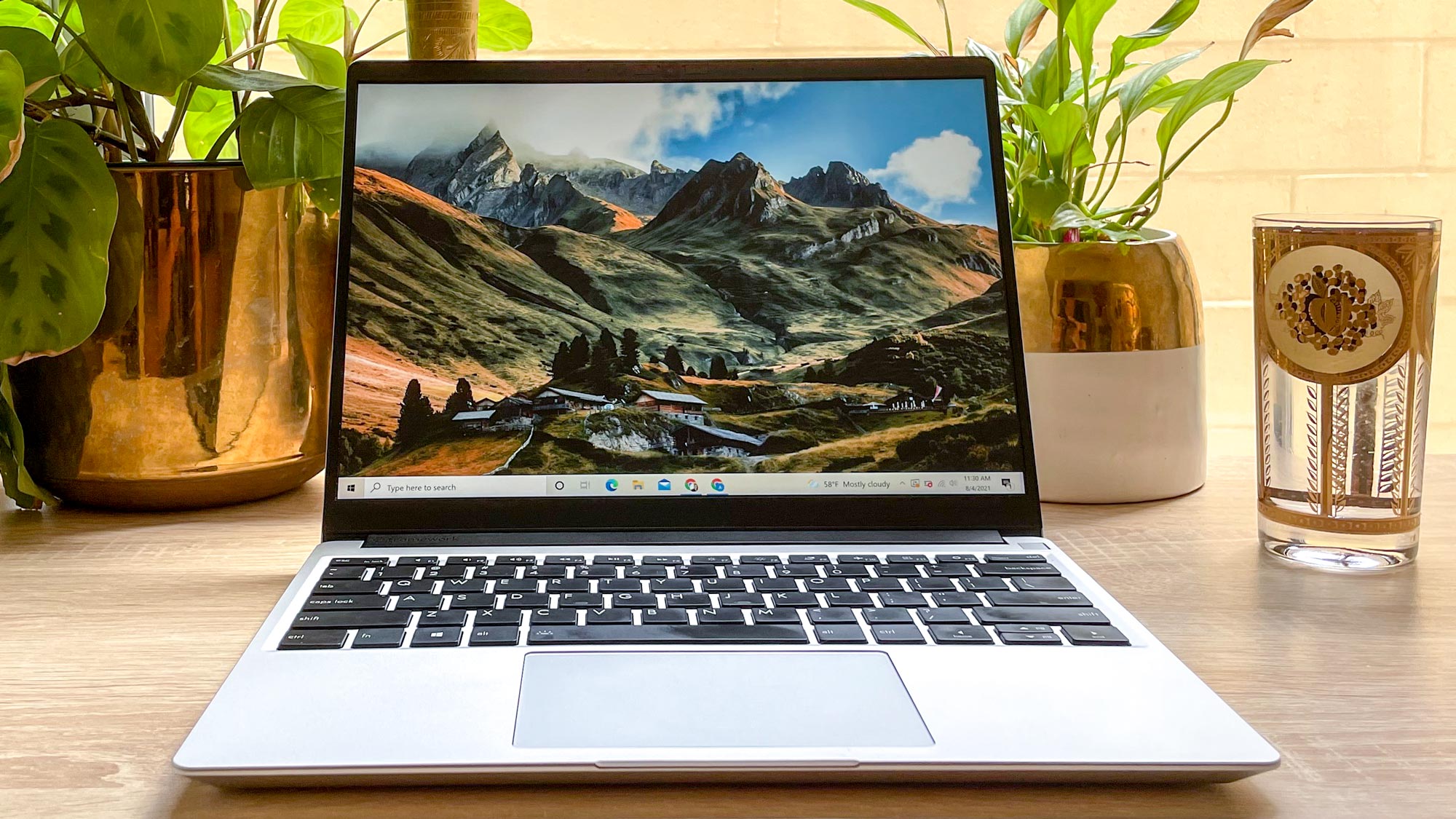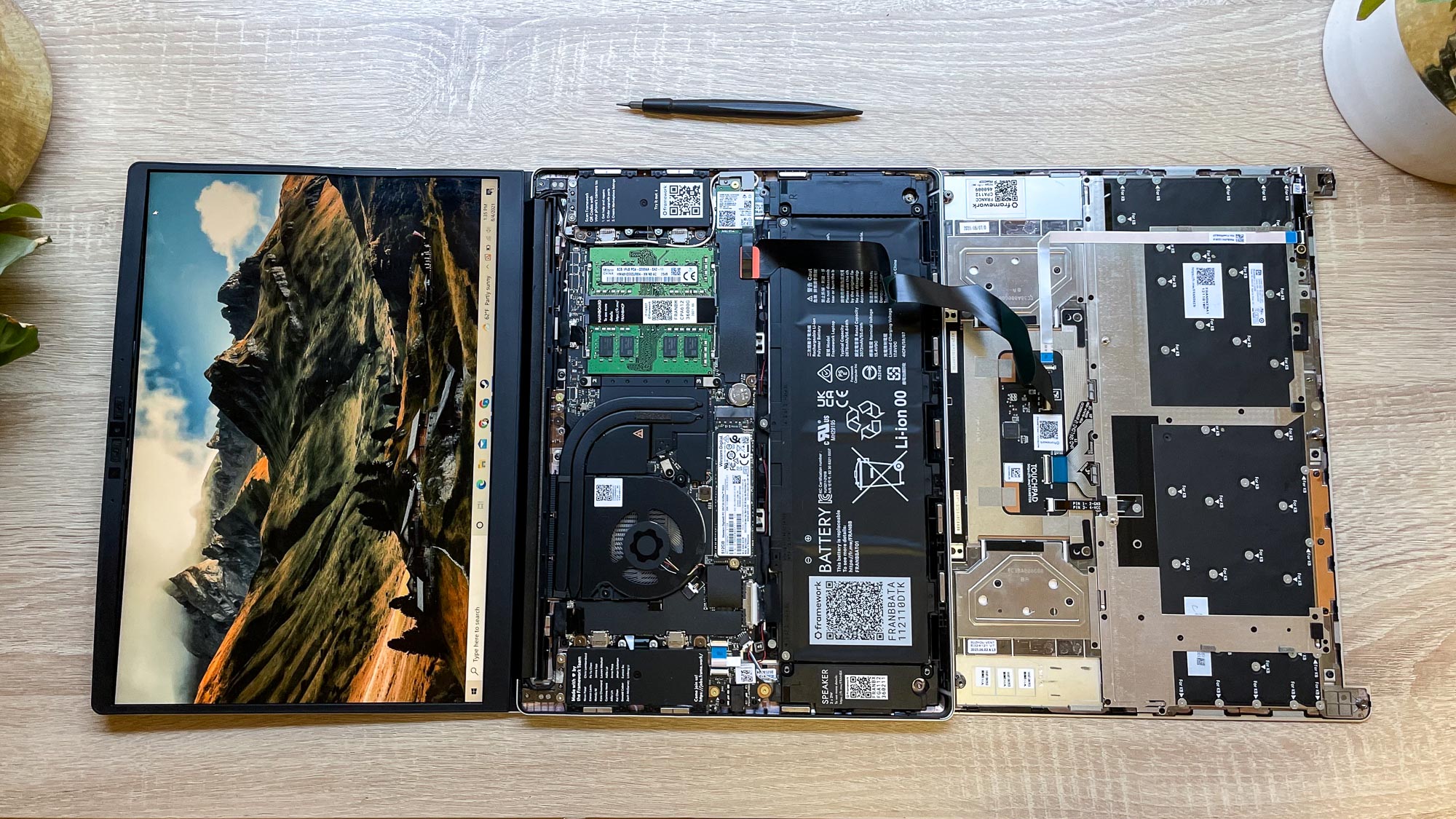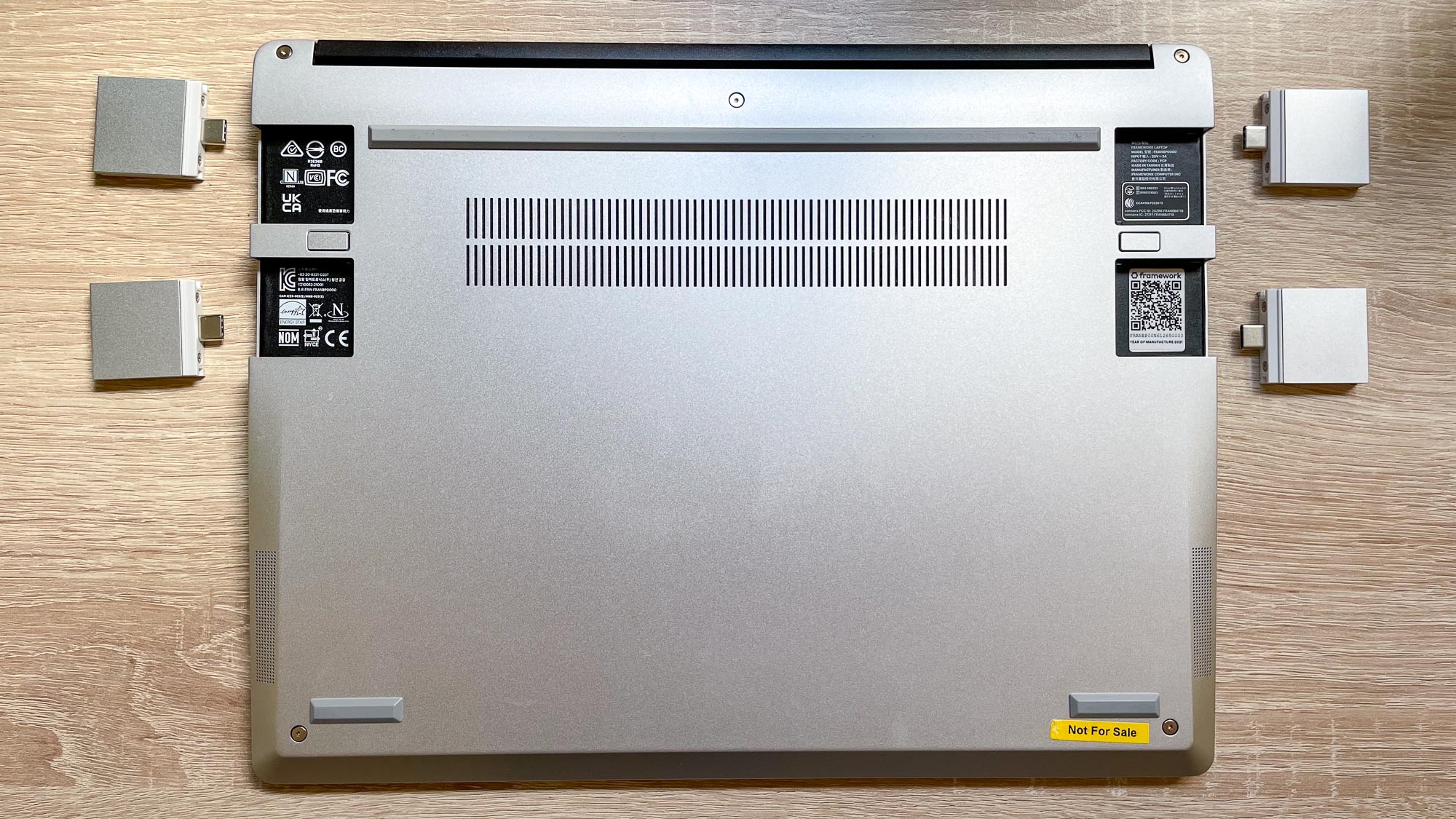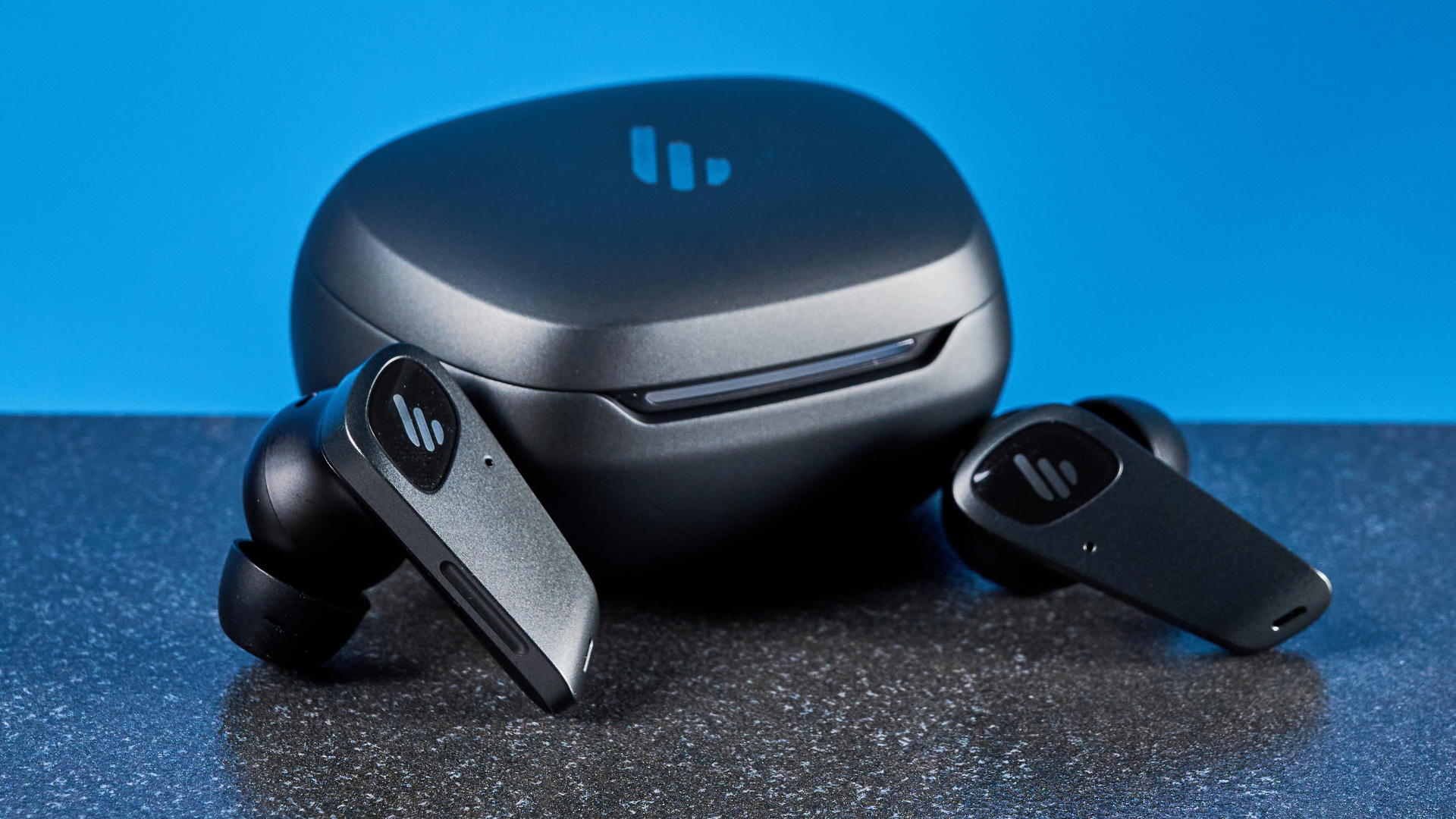My favorite laptop of the year was completely unexpected
The most surprising laptop of 2021 was also my favorite

The Framework Laptop has been on my mind a lot these last few weeks. As 2021 winds down around us, I’ve been thinking about all the notable things that happened in the laptop market this year. It’s my job to care about that stuff here at Tom’s Guide, and 2021 has been a good year to be in this position because there’s been a slew of intriguing developments pushing the industry forward.
This was the year Apple blew away our expectations of what a MacBook can do with its bespoke M1 chips. It was the year Intel Tiger Lake arrived, helping Windows laptops achieve new heights of power and efficiency. And of course, this was the year we met Windows 11, the follow-up to Windows 10 we never expected.
But for me, the most exciting thing that happened in the world of laptops this year was the debut of the Framework Laptop. In our Framework Laptop review we called it the anti-MacBook, and with good reason: the Framework is designed from the ground up to be customizable and repairable, the antithesis of Apple’s MacBooks with their soldered-on components and chassis intentionally designed to be hard to open.

Of course, it’s unfair to single out Apple for such behavior. Most laptop manufacturers don’t design their products to be easily repaired or modified by the owner, though it has been nice to see more laptops hitting the market with upgradeable memory and storage.
The Framework truly is the most owner-friendly laptop I’ve ever used.
Framework is different: the company launched its flagship laptop this year with the explicit promise that it’s easy to repair, modify and upgrade. It was an exciting pitch, but I couldn’t help but be skeptical when I first went hands-on with an early model. But when I sat down to review one of the launch units myself, I had to admit the company delivered on its promise: the Framework truly is the most owner-friendly laptop I’ve ever used.
I almost wrote “user-friendly” there, but it doesn’t quite describe why I think so highly of this device. Sure, the laptop’s clever design makes a very complicated piece of tech feel pretty simple to use, and the Framework team have clearly put in work making the process of swapping out components on the Framework feel as user-friendly as possible. But it does still demand a certain amount of interest in tinkering with your laptop (heck, there’s even a DIY Edition of the Framework you can buy that you have to finish assembling yourself), and it can be a little harrowing to pry the thing open and start swapping pieces out.
No, the Framework is the most owner-friendly laptop I’ve ever seen because it’s clearly designed by people who respect their customers. If you care to know how your laptop works, the Framework website is full of blog posts outlining the design of major and minor components, from the power adapter to the touchpad. There’s also a list of guides on how to replace everything from the mainboard to the keyboard to the bezel around the display, an unprecedented level of reparability that no other laptop can match.
And then there’s the Framework Marketplace, a place where Framework and third-party manufacturers sell both replacement parts and upgrades you can use to further customize your laptop.

Plus, Framework has committed to making its schematics available to repair shops who request them, which means you should be able to get your Framework repaired pretty easily even if the company itself goes out of business. The company has also published documentation, CAD templates and reference designs for the Framework’s unique expansion cards under an open-source license as part of its Expansion Card Developer Program, meaning anyone can conceivably design and distribute new components for the laptop.
The Framework’s remarkable expansion card system is another reason why this laptop is my favorite of the year. If you’re not familiar with it, the bottom of the laptop sports four slots, each of which accepts a Framework Expansion Card that slides into place with a click and connects to the laptop via USB-C. Swapping them out is as simple as holding down a security catch which secures the cards and sliding one out, then sliding another one in. You can even hotswap ports while the laptop is running — Windows just reads it as swapping one USB device for another.

This feature alone makes the Framework more versatile than any other laptop I saw this year. Sure, you do have to spend money buying individual expansion cards, but you also gain the freedom to configure your laptop however you need to. You could swap in an HDMI out when you’re going to give a presentation, for example, or a microSD card reader when you need to pull some photos off a camera.
You could swap in an HDMI out when you’re going to give a presentation or a microSD card reader when you need to pull some photos off a camera.
Of course, none of these features would matter much if the laptop itself was subpar. On the contrary: in my experience it’s a well-built ultraportable that’s as slim and easy to carry as a MacBook Air, with a comfy keyboard, a great 1080p webcam, and more than enough power to tackle anything you’d do in the course of a workday. In our lab testing the Framework delivered respectable performance and lasted over 10 hours on a single charge, though without a discrete GPU it’s not much good for serious gaming.
Even so, the Framework Laptop is my favorite laptop of the year because it proves laptops can be svelte, powerful, user-accessible and still be sold for a competitive price. It’s a remarkable achievement that I hope other laptop makers copy shamelessly, and I’ve been gratified to see Dell take a few steps down that route with Concept Luna, a proof-of-concept laptop designed (in partnership with Intel) to be more eco-friendly and easier to repair. It’s not quite as accessible as the Framework, but it’s a step in the right direction, and I hope to see more companies take similar steps in 2022.
Sign up to get the BEST of Tom's Guide direct to your inbox.
Get instant access to breaking news, the hottest reviews, great deals and helpful tips.

Alex Wawro is a lifelong tech and games enthusiast with more than a decade of experience covering both for outlets like Game Developer, Black Hat, and PC World magazine. A lifelong PC builder, he currently serves as a senior editor at Tom's Guide covering all things computing, from laptops and desktops to keyboards and mice.
-
BillGuen I expect a modern laptop to be sealed, slim, light and of sufficient quality to last several years without any need to repair. I think the notion of swapping out parts is 10 years out of date.Reply -
bradenroth27 Reply
I disagree. The Framework is incredibly slim and light, and even though it can be easily opened, when everything is screwed into place the laptop is very solidly held together.BillGuen said:I expect a modern laptop to be sealed, slim, light and of sufficient quality to last several years without any need to repair. I think the notion of swapping out parts is 10 years out of date.
And there is no such thing as never needing repair. Even the highest quality laptops could find themselves needing repair. For example, every lithium ion battery in the world is a consumable that will eventually need replacing, and if the battery is hidden behind multiple proprietary screws and clips while also being glued in, then that instantly lessens the appeal of having the machine be long-lasting. And if someone has an accident, such as dropping their laptop as they're moving it up to a desk for a presentation, the laptop will likely need replacement parts for the chassis, display, or anything else that got damaged.
The Framework laptop doesn't make parts swappable as a gimmick or party trick, nor does it expect people to constantly be changing parts day in and day out. It simply makes it as easy to do so without compromising on things like weight or thinness so that should a customer ever need to upgrade or repair their laptop, they can easily do so for a reasonable price. -
rocwoof I would like to see them extend their concept to an ARM-based unit, which probably should be driven by a Raspberry Pi 4 compute module, with some other size variants to be considered such as in the 10-12 inch range ala the Asus Transformer books, albeit a bit more sturdy.Reply
Actually, I would love to see a modern incarnation of my Fujitsu 8.9 inch Lifebook P series ultra portable favorites with half their thickness and higher res touch screens, and non-chiclet keyboard with an optical Trackpoint in what would be pretty much a copy of the Lenovo Thinkpad Tablet 2 bluetooth keyboard that I typically lay right on top of most of my laptops' annoying touchpad/keyboards ;-} ).
